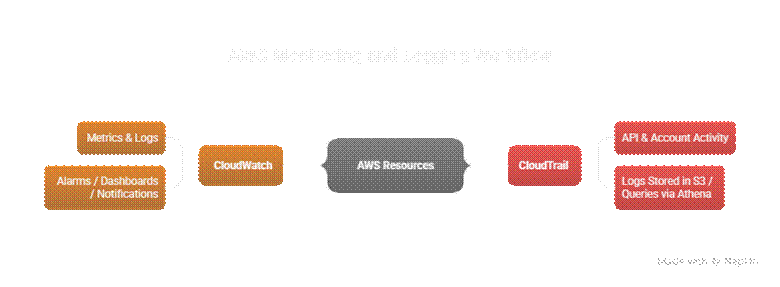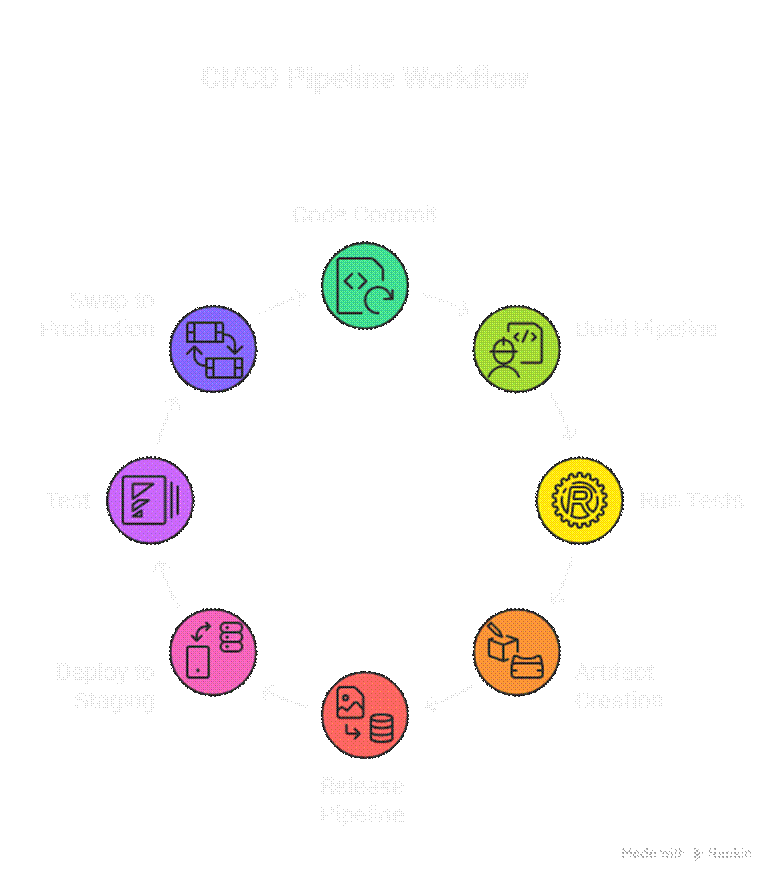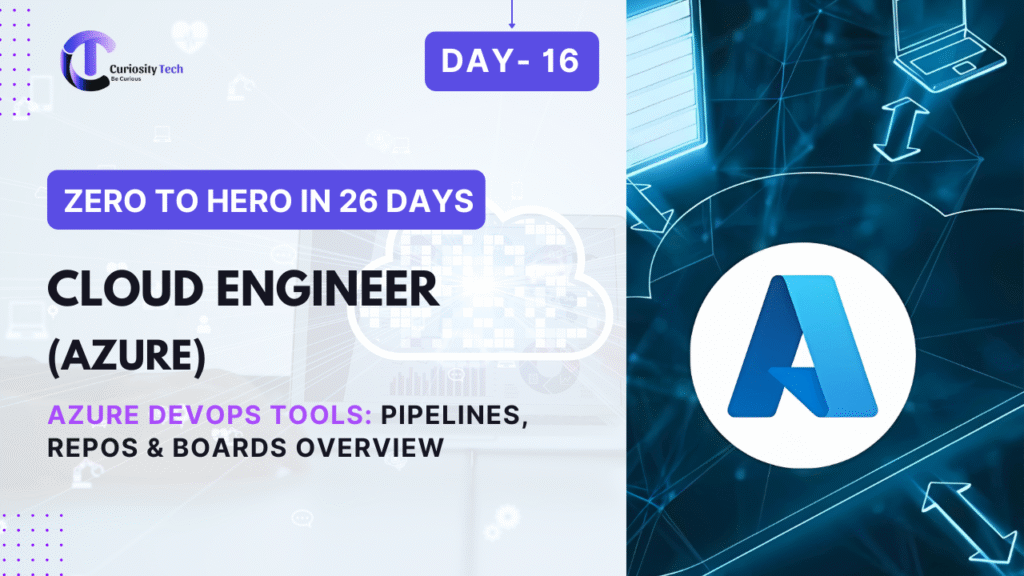Introduction
Azure DevOps is a comprehensive suite for managing the entire software development lifecycle. It allows cloud engineers and developers to plan, build, test, and deploy applications efficiently. Understanding Pipelines, Repos, and Boards is crucial to implement continuous integration, continuous delivery, and agile project management in Azure.
At curiositytech.in, learners gain hands-on experience integrating DevOps pipelines with Azure App Services, AKS, and cloud databases, preparing them to manage enterprise-level cloud projects.
1. Overview of Azure DevOps Components
Azure DevOps Services:
- Azure Repos: Source code management with Git or TFVC
- Azure Pipelines: Continuous Integration/Continuous Deployment (CI/CD) automation
- Azure Boards: Agile project management with Kanban boards, sprints, and backlogs
- Azure Artifacts: Package management for NuGet, npm, Maven, etc.
- Azure Test Plans: Manual and exploratory testing management
Diagram: Azure DevOps Toolchain

2. Azure Repos – Version Control
- Git Repositories: Distributed version control
- Branching Strategies: Feature branch, GitFlow, trunk-based development
- Pull Requests: Code review and collaboration
- Policies: Enforce build validation, required reviewers, and merge strategies
Scenario Example:
A development team maintains a microservices project. Each microservice has its own branch and is deployed independently. Pull requests ensure peer review and code quality before merging to main.
3. Azure Pipelines – CI/CD Automation
- Build Pipelines: Compile, test, and package code
- Release Pipelines: Deploy applications to environments (Dev, QA, Prod)
- YAML vs Classic Pipelines: YAML pipelines are version-controlled; classic pipelines use a visual designer
- Integration: Supports App Service, AKS, Functions, SQL Database
Practical Example: Deploy Web App via Pipeline
- Commit code to Azure Repos or GitHub
- Build Pipeline: Compile code, run tests, generate artifact
- Release Pipeline: Deploy artifact to Azure App Service
- Monitor logs and metrics via Application Insights
Diagram: CI/CD Pipeline Workflow

4. Azure Boards – Agile Project Management
- Work Items: Tasks, bugs, features, user stories
- Backlogs: Prioritize work for teams
- Sprints: Define time-boxed iterations
- Kanban Boards: Visualize workflow, track progress
- Integration: Link work items to commits and pull requests
Scenario:
A startup uses Azure Boards to track frontend, backend, and database tasks. Developers link commits to work items, QA engineers update bugs, and managers monitor sprint progress in real-time dashboards.
5. Hands-On Implementation Example
Step 1: Create Project
- Navigate to Azure DevOps → Create Project → Name: CuriosityTechWebApp
Step 2: Set Up Azure Repos
- Initialize Git repository
- Push local code using git push
Step 3: Create Build Pipeline
- Select YAML pipeline
- Define stages: Build → Test → Package
Sample YAML
trigger:
– main
pool:
vmImage: ‘ubuntu-latest’
steps:
– task: UseNode@1
inputs:
version: ’14.x’
– script: npm install
– script: npm run build
– script: npm test
Step 4: Create Release Pipeline
- Add Azure App Service deployment task
- Configure staging and production environments
- Enable approval workflow for production
Step 5: Configure Azure Boards
- Create work items: Feature, Bug, Task
- Link commits and pull requests to work items
- Monitor sprint progress using Kanban board
6. Best Practices for Azure DevOps
- Branching Strategy: Use GitFlow or trunk-based development
- Automate Tests: Ensure CI pipeline runs unit, integration, and regression tests
- Environment Segregation: Dev → QA → Staging → Production
- Monitoring & Alerts: Use Application Insights and Azure Monitor with release pipelines
- Documentation & Collaboration: Maintain linked work items and pipeline documentation
At curiositytech.in, learners practice end-to-end DevOps workflows, connecting Azure Repos, Pipelines, Boards, and App Service, simulating real-world enterprise scenarios.
Conclusion
Azure DevOps tools—Repos, Pipelines, and Boards—enable cloud engineers to manage code, automate CI/CD, and track work efficiently. Mastering these tools allows teams to deliver applications faster, maintain code quality, and ensure transparent project tracking. Hands-on projects at curiositytech.in ensure learners gain practical expertise in DevOps best practices.
Suggested Tags & Keywords



